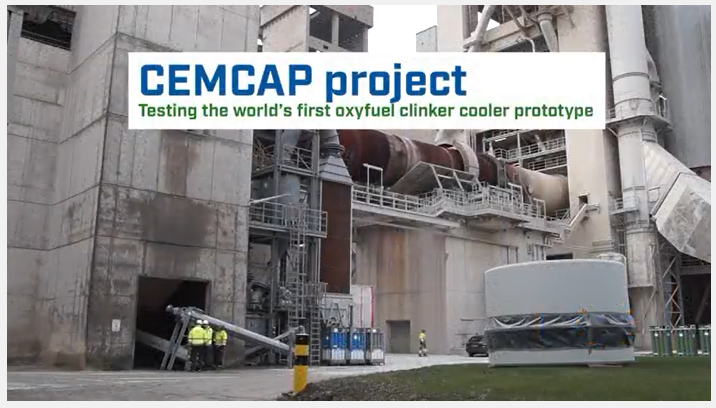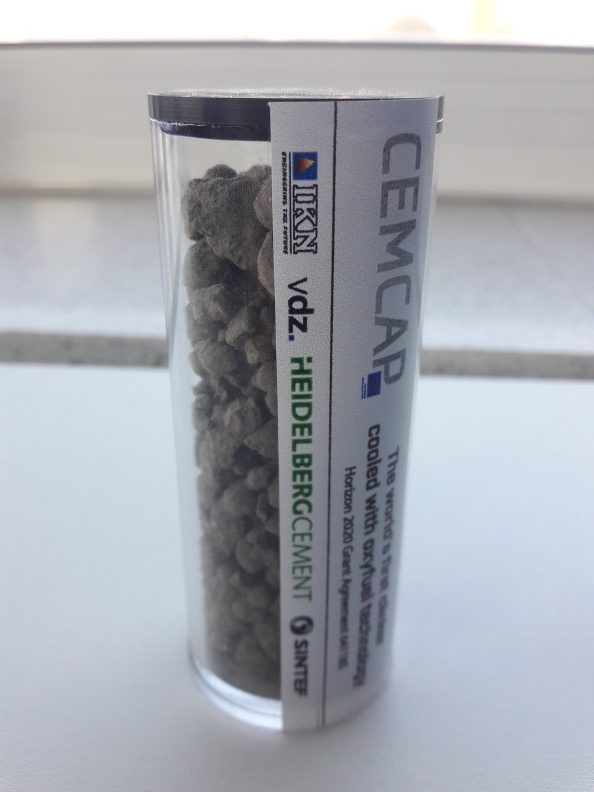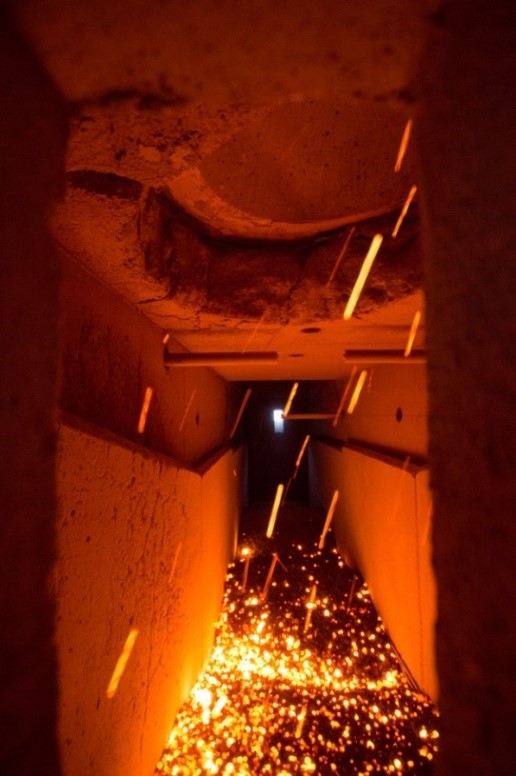Guest bloggers: Marco Lindemann Lino (VDZ) and Johannes Ruppert (ECRA)
Reducing CO2 emissions from the cement industry with oxyfuel technology
Climate protection is one of the most important future issues for our society. CO2 emissions from the cement industry contribute to 6-7 % of global anthropogenic CO2 emissions. An important option to significantly reduce the CO2 emissions from the cement industry is to capture CO2 for storage (CCS) or utilization (CCU).
Cement plants typically have a lifetime as long as 30-50 years. Thus, a CO2 capture technology must be retrofitted to existing cement plants. Four CO2 capture technologies are currently being assessed in the CEMCAP project, with focus on retrofitability. CEMCAP is coordinated by SINTEF and funded by the European Union’s Horizon 2020 research and innovation programme under grant agreement No 641185. The project aims to promote the readiness of technologies for CO2 capture in the European cement industry.
The cement industry started a research project for investigation of technologies for cement CO2 capture under the leadership of the European Cement Research Academy (ECRA) more than 10 years ago. During this period the decision was taken to focus the ongoing work on the oxyfuel technology. A mixture of oxygen and recirculated exhaust gas is used instead of air for fuel combustion. This results in an exhaust gas flow that is highly enriched in CO2, which, after further processing, can be transferred to a storage site or for utilization. In CEMCAP, the ECRA oxyfuel research has been taken further by means of component testing and further process simulations and optimization of the cement manufacturing process under oxyfuel conditions.
First oxyfuel clinker cooler tested in industrial environment
Clinker coolers are considered key-equipment for energy efficient operation of a cement plant. Clinker cooler operation not only impacts the fuel consumption of the cement plant, and thus indirectly CO2 emissions, but also influences clinker quality, which must be always guaranteed to produce high quality cement. VDZ and its partners IKN and HeidelbergCement (HC) were able to design, construct and operate the world’s first oxyfuel clinker cooler prototype tested in an industrial environment
The overall aim of this experimental work was the testing of an oxyfuel clinker cooler in an industrial environment in order to assess its cooling performance (efficiency), as well as the potential impacts of CO2–rich cooling gas on clinker quality. Based on the existing designs for single-stage and two-stage gas-tight clinker coolers, which had been developed in ECRA’s CCS project phase III, a choice for a layout of the prototype was made. It took into account the potential for up-scaling, as well as the technical feasibility to be operated in prototype scale. The oxyfuel clinker cooler prototype was designed with a capacity of 80 t/d, which corresponds to about 3% of the clinker production of a reference cement plant (3000 t/d).
Despite some unexpected experimental challenges, several samples of clinker cooled down in an oxyfuel environment were taken during the trials for further analysis in VDZ’s laboratories.
The experimental results were first presented in the 2nd ECRA/CEMCAP workshop on 7th November 2017 at VDZ in Duesseldorf. Final results will soon be published at the CEMCAP webpage and disseminated in the ECRA/CEMCAP/CLEANKER Workshop, which will take place on the 17th October 2018 in Brussels. This workshop will highlight the final conclusions from CEMCAP research, including the techno-economic comparison of the four investigated CO2 capture technologies. An important topic at the workshop will be to discuss the technological and economic framework for the application of CO2 capture in the cement industry.
Next step: Industrial-scale
Testing a pilot oxyfuel clinker cooler in an industrial environment within CEMCAP project was a unique opportunity to gain valuable know-how before up-scaling to the industrial scale. The CEMCAP experimental experiences gained by application of oxyfuel technologies will help to give guidance in future design of an industrial scale oxyfuel kiln and clinker cooler.
With a comprehensive list of lessons learned during the trials, cement producers and clinker cooler constructors can now minimize economic and technical risks. The dissemination of CEMCAP experimental results in ECRA/CEMCAP workshops and its intensive discussion with experts and stakeholders from the industry has been one of the keystones for future implementation of industrial-scale carbon capture projects in the cement industry. One industrial-scale project is already in preparation.
ECRA is launching a project with the objective to test and demonstrate oxyfuel technology in industrial-scale (please see ECRA press release). Two European cement plants, which are able to fulfil all the necessary technical prerequisites, have been identified in a selection procedure. The main task is now to find the required European and national sources of funding for this technology demonstration project. It seems that the cement industry has never been so close to an oxyfuel industrial-scale demonstration for capturing CO2 before. It would be a significant technological step and option required for significant reduction of CO2 emissions.




Iwant investment full
Iwant to help abroken cement factory
I onley have little left